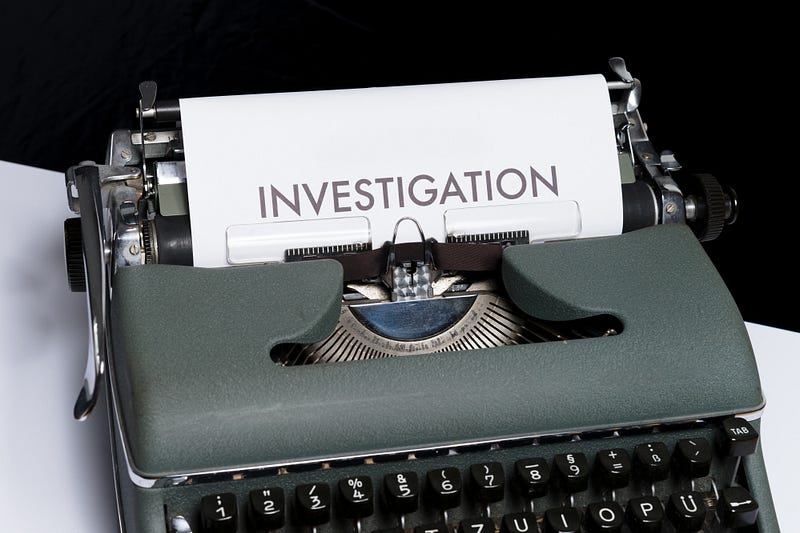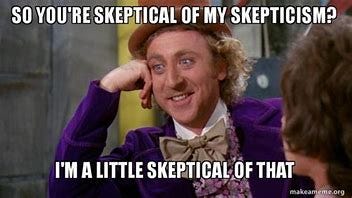Navigating Misinformation with Carl Sagan's Insights
Written on
Understanding the Baloney Detection Kit
In an era overwhelmed by misinformation, Carl Sagan's "Baloney Detection Kit" serves as a vital tool for deciphering the intricacies of fake news, political bias, and pseudoscience.

Photo by Markus Winkler on Unsplash
The Importance of Critical Thinking
Often, the allure of fake news and pseudoscientific ideologies can obscure our perception of reality. In a time when distinguishing fact from fiction has become increasingly difficult, how can we effectively separate truth from falsehood? Science, despite its imperfections, strives to equip individuals with the means to reject misleading ideas and embrace sound reasoning. The scientific method stands out as our most effective tool—a guiding light in the darkness.
At its essence, this method is a refined process that advocates skepticism, critical inquiry, and reliance on empirical evidence. It compels us to challenge our preconceptions and test them through stringent experimentation. The method begins with observation, leading to the formulation of questions. Next, a hypothesis is developed—a preliminary explanation that must be validated or disproven through systematic experimentation and data analysis. Only after thorough peer review and replication of results can we draw conclusions and broaden the horizons of human knowledge.
By adhering to the principles of the scientific method, we can shield ourselves from the pervasive threat of misinformation. It teaches us to demand evidence, scrutinize sources, and hold ourselves accountable for the accuracy of our assertions. As Carl Sagan famously stated, "extraordinary claims require extraordinary evidence." Through the scientific method, we can navigate the vast cosmos of knowledge, free from the shackles of ignorance and falsehood.

Sagan's Tools for Skepticism
The scientific method is not solely a scientists' tool; it is crucial for fostering skepticism—an essential habit that empowers you to critically assess the credibility of information. As you refine your skeptical thinking, you will become more adept at recognizing flawed arguments and constructing well-reasoned conclusions.
In his influential work "The Demon-Haunted World: Science as a Candle in the Dark," Carl Sagan presents the Baloney Detection Kit, a set of strategies designed to enhance skeptical thinking. Key elements of this toolkit include:
- Third-Party Validation: Seek corroboration from independent sources to verify a claim's credibility.
- Debate and Argument Evaluation: Engage in discussions that challenge ideas to ensure every aspect of an argument is solid and withstands scrutiny.
- Minimizing Authority Bias: Concentrate on the evidence and rationale behind an authority figure’s argument instead of accepting their opinion uncritically.
- Falsifiability: When comparing theories, prefer those that can be disproven, as they exhibit scientific rigor.
- Exploring Alternatives: Remain open to multiple explanations before arriving at a conclusion while avoiding personal biases.
- Verification through Calculation: Investigate underlying data and calculations to ensure the information is accurate.
- Occam's Razor: Favor the simplest explanation when multiple theories could clarify a phenomenon.
- Experimentation and Replication: Value claims that can be tested and replicated, as they are more credible within the scientific community.
Addressing Misinformation on Social Media
Although Sagan's ideas emerged in 1995, they remain strikingly relevant in today’s social media landscape. When encountering an enticing post online, take a moment to apply the tools from the Baloney Detection Kit. Investigate the information's source, critically analyze the arguments presented, and consider alternative explanations before accepting the claim as truth.
To refine your baloney detection abilities, it's crucial to identify common logical fallacies, such as:
- Ad Hominem: Attacking the person instead of their argument.
- Argument from Authority: Accepting an authority figure's stance without evaluating the evidence.
- Argument from Consequences: Judging a claim based on the potential outcomes rather than its validity.
- Appeal to Ignorance: Assuming something is true because it hasn't been disproven.
- Excluded Middle: Neglecting the possibility of a middle ground between two extremes.
- Begging the Question: Assuming the conclusion within the argument.
- Observational Selection: Focusing only on supporting evidence while ignoring contradictory evidence.
- Suppressed Evidence: Omitting vital information that could challenge a claim.
- Weasel Words: Using vague terms to make a statement sound more persuasive.
The Challenges Ahead: AI and Misinformation
With advancements in AI technology, we must prepare for the challenges posed by convincingly generated fake news and realistic deepfake videos. The future will necessitate heightened skepticism and the development of sophisticated tools to distinguish between authentic and fabricated content. Collaboration among tech companies, researchers, and policymakers will be essential in crafting strategies to combat the spread of AI-generated misinformation.
The value of independent thinking, skepticism, and curiosity cannot be overstated. By sharpening our critical thinking skills, recognizing fallacies, and nurturing our inquisitiveness, we can effectively navigate the labyrinth of fake news, pseudoscience, and AI-generated content. Embracing the scientific method and fostering a culture of skepticism will empower us to make informed decisions in an ever-evolving world.
Final Thoughts and Practical Advice
Carl Sagan's Baloney Detection Kit remains crucial in today's intricate information environment. By adopting a skeptical mindset and utilizing these tools, we can better defend ourselves against the barrage of misinformation, political bias, and pseudoscience that permeate our daily lives. Stay curious, question claims persistently, and continue your quest for truth, for it is through disciplined critical thinking that we can hope to thrive in our complex world.
To protect against fake news and identify AI-generated content, consider these practical tips:
- Assess the Source's Credibility: Check if the source has a track record of reliability and respect in its field.
- Cross-Reference Information: Compare the story with reports from reputable sources for consistency.
- Spot AI-generated Content: Look for inconsistencies in grammar, style, or tone that may indicate AI origin.
- Fact-Check: Use tools like Writer and OpenAI’s classifier to verify AI text, or Google’s features for detecting AI-generated images.
- Acknowledge Your Own Biases: Be aware of how your personal beliefs might influence your judgment.
Michael Shermer: Baloney Detection Kit
Michael Shermer discusses the importance of Sagan’s Baloney Detection Kit, offering tools and techniques for critical thinking and skepticism.
How to Detect Baloney the Carl Sagan Way
In this insightful video, Michael Shermer outlines how to apply the Baloney Detection Kit in modern contexts, especially in the face of misinformation.